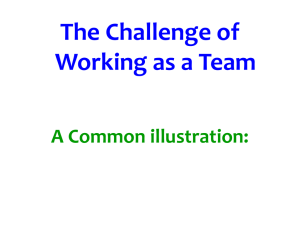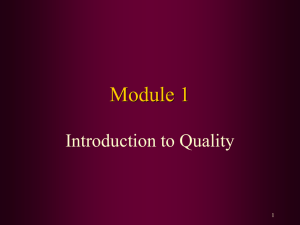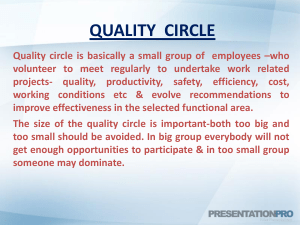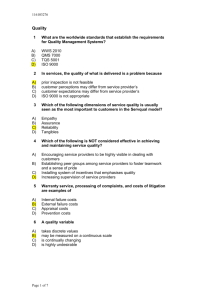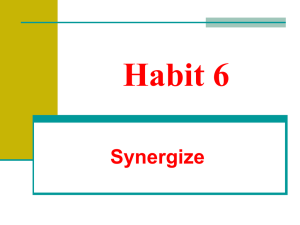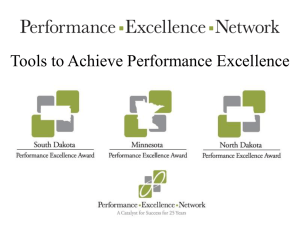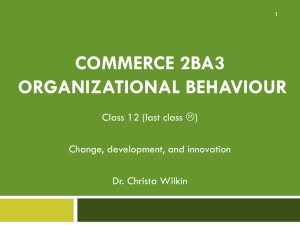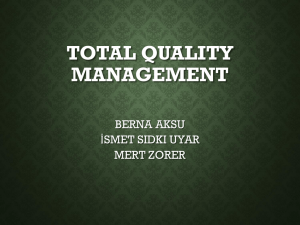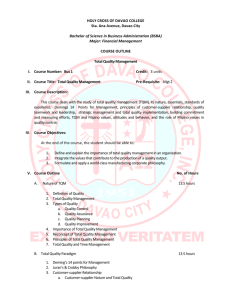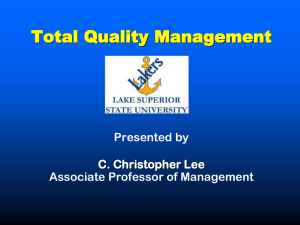TQM Team work
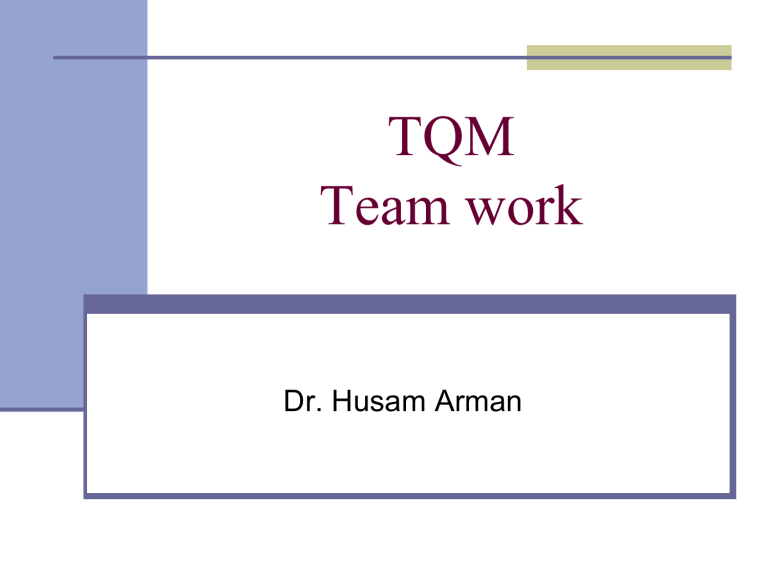
TQM
Team work
Dr. Husam Arman
Key TQM principles
An integrated, principle-based, organizationwide strategy for improving product and service quality
Customer focus
Continuous improvement
Teamwork (later .. )
2
Have you ever wondered why migrating geese fly in a V formation?
As each bird flaps its wings, it creates uplift for the bird following.
Lesson learned from the Geese
Scientists have determined that the V-shaped formation that geese use when migrating serves two important purposes:
First, it conserves their energy. Each bird flies slightly above the bird in front of him, resulting in a reduction of wind resistance of 71 %. The birds take turns being in the front, falling back when they get tired.
Second, the V-formation makes it easier to keep track of every bird in the group. Fighter pilots often use this formation for the same reason.
Whenever a goose falls out of formation, it suddenly feels the drag and resistance of trying to fly alone…
…and quickly gets back into formation.
Like geese…
… people who share a common direction and sense of community can get where they are going quicker and easier than those who try to go it alone.
Geese in the rear of the formation honk to encourage those up front to up their speed. It is important that our “honking from behind” be encouraging. Otherwise it’s just - well - honking.
They stay with the unhealthy member of the flock until it is either able to fly again or dies.
Teamwork
The development of people and their involvement in improvement activities both individually and through teamwork is a key feature in a company’s approach to TQM.
A key aspect of this is making full use of the skills and knowledge of all employees to the benefit of the individuals and the organization and to create a group culture
10
Teams and Creativity
“Most people strongly believe that teams are more creative than individuals, when in fact they aren’t”
Thompson, 2003
Measuring Creativity
The cardboard-box test
Spend 5 minutes writing down all of the uses that you can for a cardboard box
Measuring Creativity
The cardboard-box test
Fluency – how many different ideas [
Typical range 5-40 ]
Flexibility – how many different types of idea
[range 4-17 categories]
Originality – uniqueness of idea (5% or less of sample) [range 0-14]
Lesson: Quantity often does breed quality
Rules for Brainstorming
No Criticism
Freewheeling welcome
Quantity desired
Combining/improving ideas encouraged
Threats to Team Creativity
Social loafing – my contribution is unidentifiable
Conformity – I don’t want to be controversial or disliked
Production blocking – I had a good idea, but I forgot it while waiting for my turn to talk, and I didn’t hear what you said because I was thinking about my idea.
Downward norm setting – tendency to match performance to lowest performing level of group
The role of teams in TQM
Aid the commitment of people to the principles of TQM.
Provide an additional means of communication
Improve relationships
Help to develop people and encourage leadership traits
Build collective responsibility and develop a sense of ownership
16
The role of teams in TQM
Aid personal development and build confidence.
Develop problem-solving skills
Facilitate awareness of quality improvement potential
Help to facilitate a change in management style and culture
Improve morale
17
Teamwork exercise
Lego Game
18

